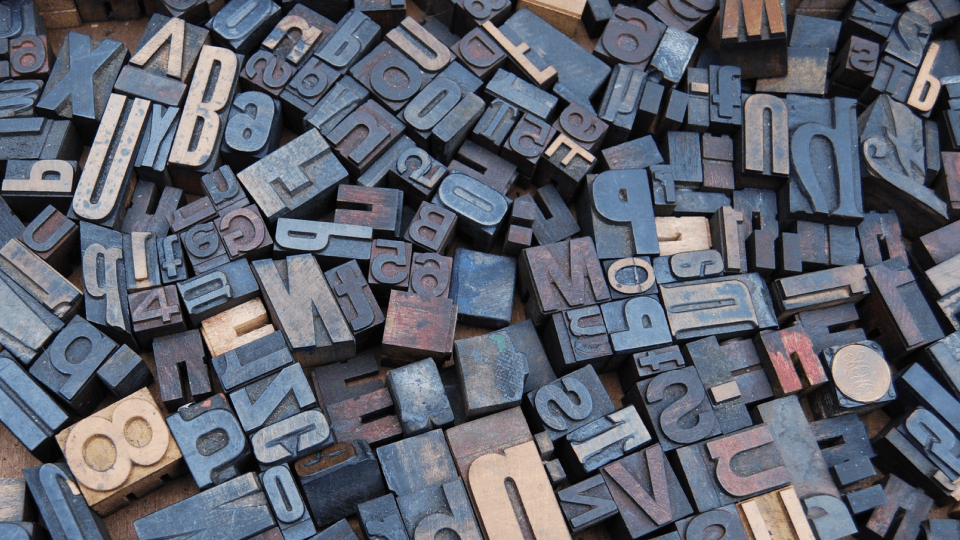Graphic design plays a crucial role in enhancing the viewer’s experience in films and television shows. It combines typography, color schemes, motion graphics, and visual branding to create captivating and immersive narratives. Visual storytelling is a foundational pillar of the entertainment industry, enchanting audiences and transforming their perceptions.
Graphic design connects narrative vision to viewer perception, imbuing stories with a primal visual language, and leaving an indelible mark on our senses. In this article, we are going to explore how was graphic design used in film and television, looking at its historical uses and potential future developments.
How was Graphic Design Used in Film and Television?

History of Graphic Design in Film and Television
Graphic design has been used in film and television since the early days of cinema. In the past, titles and credits were hand-painted, and graphic elements were limited to basic shapes and colors.
Technological advancements, such as digital design and CGI, revolutionized the industry, enabling designers to create realistic and mesmerizing visual effects. Graphic design’s influence extended beyond titles, permeating set design, props, costumes, and marketing materials, resulting in a cohesive visual experience that enhances storytelling.
The collaboration between graphic designers and film professionals blurs the line between disciplines, with designers contributing their expertise in visual communication to create immersive on-screen worlds. Graphic design in film and television is a dynamic art form that continually pushes creative boundaries and engages audiences on a visual level.
Use of Typography in Films
Typography in film is an essential form of art that helps filmmakers portray a film’s mood and tone through its arrangement and design. It enhances the storytelling process by altering the title, credits, and dialogue on screen. To connect with the film’s genre and intended message, graphic designers carefully examine font choices, sizes, and colors.
Bold and sans-serif typefaces portray urgency, danger, and tension in horror films, but graceful and cursive fonts create romance, playfulness, and whimsy in romantic comedies and light-hearted films. Typography’s size and arrangement are also important in emphasizing particular components within a scene. Colors like red and orange can elicit distinct emotions and improve the overall visual effect.
Use of Color in Films
Color is another critical element of graphic design in films. Filmmakers utilize color palettes to convey emotions, create contrast, and manipulate the audience’s perception of time and space. The monochrome palette highlights the seriousness of the subject in films such as Steven Spielberg’s “Schindler’s List.”
The use of brilliant colors in fantasy and science fiction films transports viewers to fantastic realms, generating aesthetically attractive landscapes and situations. Rich and brilliant color palettes are used in films like “Avatar” and “Guardians of the Galaxy” to express the extraterrestrial character of their themes.
Color can also represent changes in time and space, guiding the audience’s comprehension of the chronological and spatial components of the narrative. Color can also represent themes and motifs, boosting storytelling through subtle visual signals.
Also Read: The Complete Guide to Color Theory And Its Application
Motion Graphics in Television
Motion graphics have revolutionized television design, particularly in news and sports broadcasting. These dynamic visualizations effectively convey information, simplify complex data, and enhance storytelling. In news reporting, motion graphics simplify complex information by incorporating animated charts, graphs, and visual elements. In sports broadcasting, they bring excitement to games by displaying real-time scores, game statistics, player profiles, and highlights. Title sequences have become iconic elements of television shows, setting the tone and captivating the audience from the start. The opening sequence of a show allows graphic designers to showcase their creativity and leave a lasting impression.
Motion graphics also allow television networks and production studios to establish a consistent visual language across their programming, creating a unified brand identity that viewers can recognize and associate with the network or production company. This branding extends beyond the content and can be seen in promotional material, advertisements, and on-screen transitions. Consistency in motion graphics helps build familiarity and trust with the audience, enhancing brand recognition and loyalty.
As technology advances, motion graphics in television are expected to evolve further, with the rise of augmented reality and virtual reality offering even more immersive and interactive experiences. Graphic designers will play a crucial role in developing cutting-edge visual experiences. In conclusion, motion graphics have become an essential component of television design, particularly in news and sports broadcasting, enabling the swift communication of information, enhancing storytelling, and contributing to the overall viewing experience.
Graphic Design in Branding Films and TV Shows
Graphic design is a crucial aspect of branding films and TV shows, capturing the attention and interest of the audience. It involves creating visual elements that establish a distinctive identity, build anticipation, and convey important messages. Graphic designers collaborate with filmmakers, producers, and marketing teams to develop visual assets that effectively communicate the genre, mood, and overall message of the production. Examples of successful branding through graphic design include the “Star Wars” franchise, where the iconic opening crawl and yellow font are instantly recognizable.
Graphic designers use various techniques and strategies to create a visual identity that resonates with the intended audience, evoke specific emotions, convey the atmosphere, and provide a glimpse into the storyline. Posters, trailers, and title sequences are key visual assets that capture the essence of the production and entice audiences to learn more. These designs generate buzz, spark curiosity, and leave a lasting impression. Overall, graphic design is a collaborative process that helps build anticipation, generate buzz, and establish a visual identity synonymous with the brand.

Role of Graphic Design in Movie Posters and Trailers
Movie posters and trailers are the first points of contact between a film and its audience. Graphic designers are crucial in developing eye-catching graphics that rapidly capture the attention of viewers and communicate the spirit of the film. They collaborate with filmmakers to generate intriguing promotional materials that attract fans to examine the film further.
Future of Graphic Design in Films and Television
The future of graphic design in films and television is promising, as emerging technologies like virtual reality (VR), augmented reality (AR), and interactive media are transforming the entertainment industry. VR allows viewers to experience narratives from a first-person perspective, while AR overlays digital elements onto the real world, blending the virtual and physical.
Interactive media, including interactive films and television shows, allows viewers to make choices and shape the outcome of the story. Technology advancements make high-quality graphic design tools more accessible to a wider range of individuals, allowing designers to bring their creative visions to life. By staying versatile and adaptable, graphic designers can seize the opportunities presented by evolving technologies and contribute to groundbreaking and visually captivating storytelling.
Benefits of Good Graphic Design in Films and Television
Excellent graphic design has various advantages in the area of visual storytelling. It improves the overall experience for the audience, making the film more interesting and memorable. A well-designed visual identity may generate an unique and identifiable brand for a film or television show, encouraging anticipation and a loyal fan following. Furthermore, great graphic design can add to the success of a film or television show by drawing viewers, raising ticket sales, and earning recognition for the designers themselves.
Conclusion
Graphic design is a crucial aspect of the film and television industry, transforming stories into unforgettable experiences. It involves typography, color, motion graphics, and branding, all contributing to the art of visual storytelling. Effective graphic design sets the mood and tone of a film, allowing audiences to immerse themselves in the intended atmosphere. As technology advances, graphic designers will continue to push creative boundaries, shaping the future of entertainment and enriching audiences’ lives.





